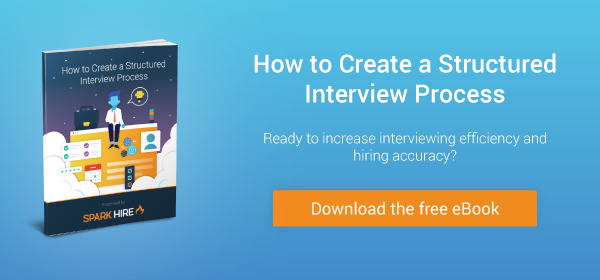This post was updated on February 6, 2020 to reflect changing trends and research in organizational turnover rates.
In 2018, a whopping 41.4 million U.S. workers voluntarily left their jobs, according to the Work Institute’s 2019 Retention Report. If employers allow this trend to continue, U.S. business voluntary annual turnover will reach 35% by 2023, putting you at enormous risk.
With that in mind, you’re likely thinking about your workforce. Are your employees engaged? If not, are you and other leaders finding solutions to improve employee engagement? How is your turnover rate so far? How does it impact your current team?
All of the criteria mentioned above are essential, but looking at your overall turnover rate is exceptionally important. After all, when retaining employees becomes a struggle, you not only have to rehire for positions frequently, but also you need to consider what’s causing a higher turnover rate. Furthermore, if otherwise satisfied employees see the problems associated with high-turnover, you’ll begin experiencing even more costly issues.
These are tough to overcome situations, so let’s take a look at how high turnover rates impacts your organization.
First, let’s define turnover rate. Your company’s turnover rate is the percentage of employees who voluntarily leave your company in one year. Of course, you want to shoot for a low turnover rate because this means, on average, fewer employees are leaving the company.
Conversely, a high turnover rate means many of your employees, over a year, have quit. Not only does this point to a potential employee experience problem, but it costs you money in the process.
Here’s a more in-depth look into the negative impacts of high turnover rates:
It’s expensive
Turnover takes an exceeding amount of resources. In fact, the Work Institute estimates the cost to lose an employee is around $15,000. To put that into perspective, in 2018, U.S. employers have lost $617 billion to employee turnover.
So, why is the cost so astronomical? Well, if you need to fill a position, you will either have to use a recruitment agency ($) or post to a job board ($) — either way, you are spending money. At the same time, the position you need to fill is currently empty, so who is doing that work? Chances are it’s no one or other employees work extra hard to perform their duties in addition to these unfilled ones. Either way, your productivity levels drop, and that costs you capital.
Your team loses members
If you see someone else yawn, chances are you feel the urge to yawn. That’s because the power of suggestion is strong, and we, as humans, are greatly influenced by it. It works the same way when people leave your company.
Of course, there may not be a mass exodus. But if your employees see numerous people quit, they’ll begin to ask themselves, “Why did they quit? Did they find a better working environment? What is wrong with this place? Is it the managers? Why are people across the company leaving?”
These thoughts then lead to a new job search, employees might change their career options, and the vicious cycle continues. Additionally, employees who take on the duties of those who left may become burnt out and decide the best option is to leave before another challenge is thrown their way. Now, you have another open role. The unfulfilled obligations snowball until your current team is entirely overwhelmed and not understanding the overarching issues.
What happens to all of that work? When 49% of hiring pros say seven to 14 days pass from application to job offer, according to our 2018 Growth Hiring Trends in the United States, the chances are that some of that work will need to be completed.
Odds are, picking up the tasks of another position until it is filled adds stress to employees. After all, they didn’t quit, so why do they feel punished? Ultimately, this leads to lower employee morale.
It lowers employee morale
If you have a high turnover rate, then there was likely an issue with employee morale years ago. However, once a high volume of employees commits to leaving, the level of morale drops even lower.
For starters, you have a team of workers. Once a few leave, others may feel left behind. Their peers moved on to “greener pastures,” and they feel stuck here. Once more and more people start leaving, they’ll wonder why in the world they are still there.
When you have low employee morale, which in turn affects your company culture, it’s challenging to attract top talent. As a result, you can’t ignore the direct implications of high employee turnover. You must face these issues, and take control of the situation before hiring new employees while the infectious cycle continues.











“Intents and” purposes, not intensive.
Fixed! Thanks for the correction, Sarah.
What did you think of the article?
I don’t think it addressed the issue of companies that fire everyone. I work at an “employee owned” grocery store that let so many people go that I stopped asking new employees their names. I was eventually let go as well and now that I have had time to reflect. I’m grateful to be out of there.
That’s an interesting experience, Jean. Was there anything that could’ve been done by the store to help that situation?
Very interesting article! Thank you for sharing. I used to work in a company with high turnover rate before, until I jumped ship:). It almost feels like a fever dream where I need to deal with angry suppliers and customers on a daily basis because company is running out of cash. Instead of working out a solution and cheer people on, the owner likes to spend time and company money on his holiday home and yell at people when there is a mistake. Oh right, and deny the fact he created the problems at the first place. I witnessed my coworker, a pretty young woman cries in front of all colleagues because she was accused by the owner for something not done right during a staff meeting. She left not long after that. I think not getting enough respect and lost faith in leadership are the top reasons for the high turnover rate.